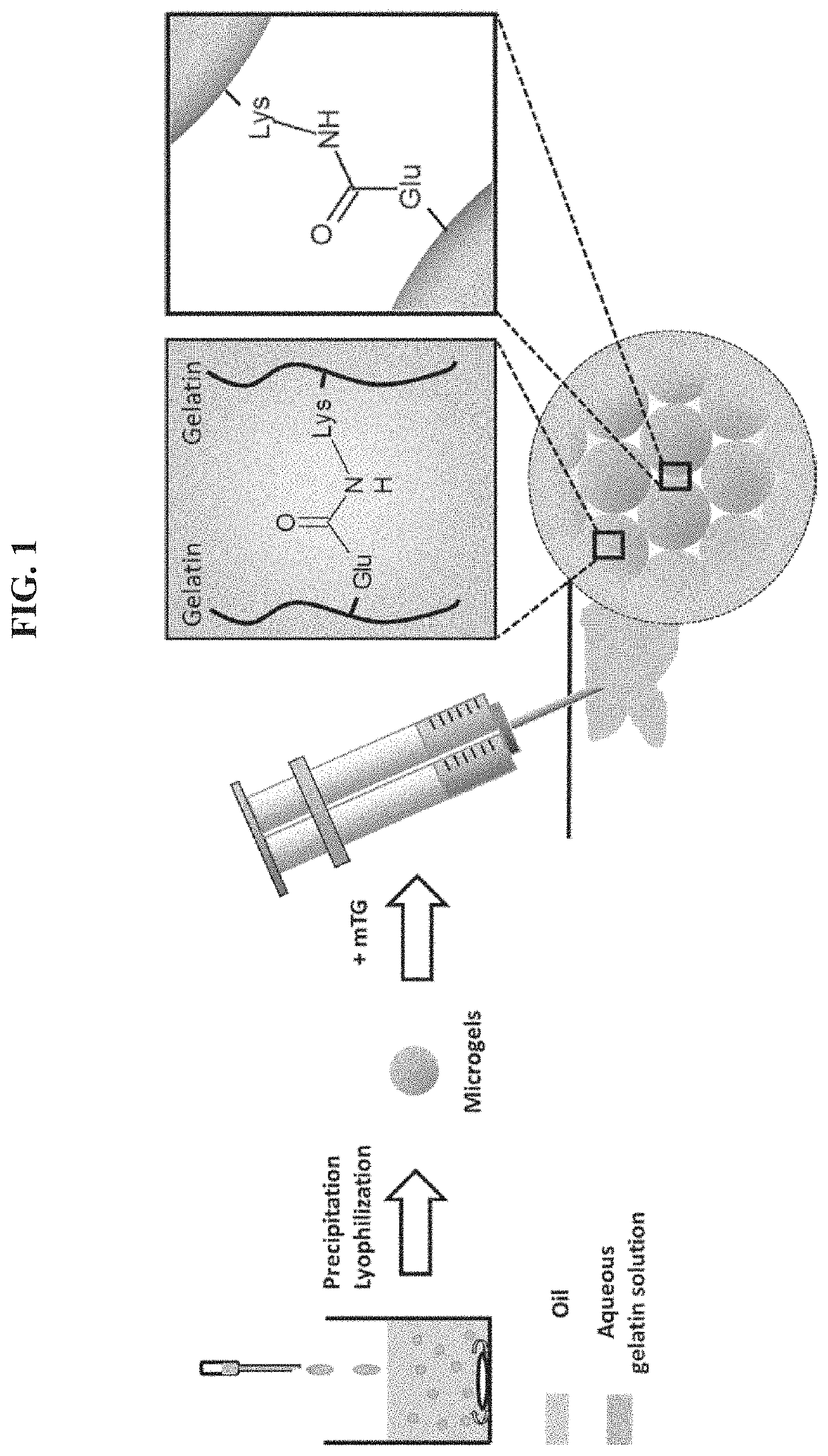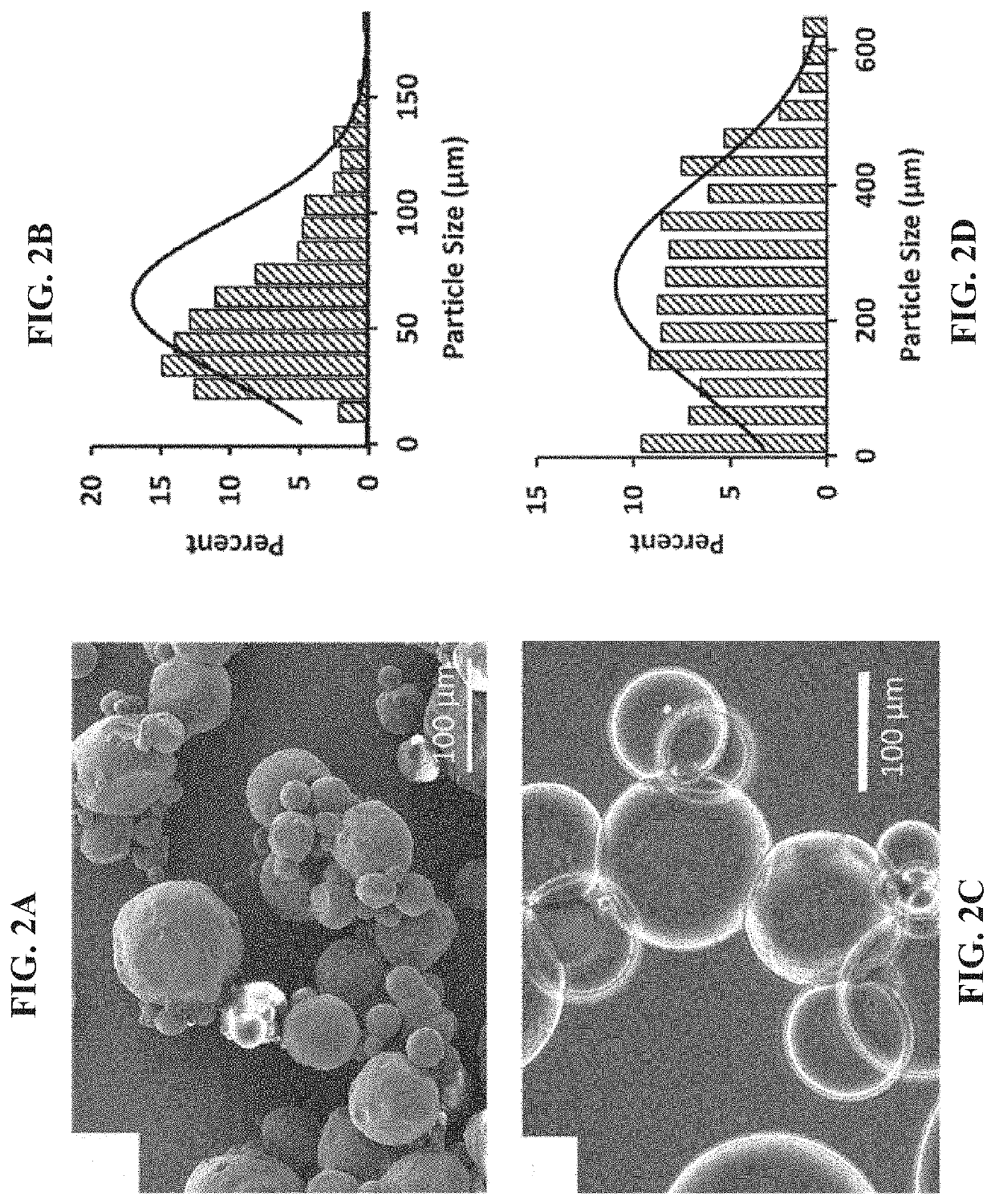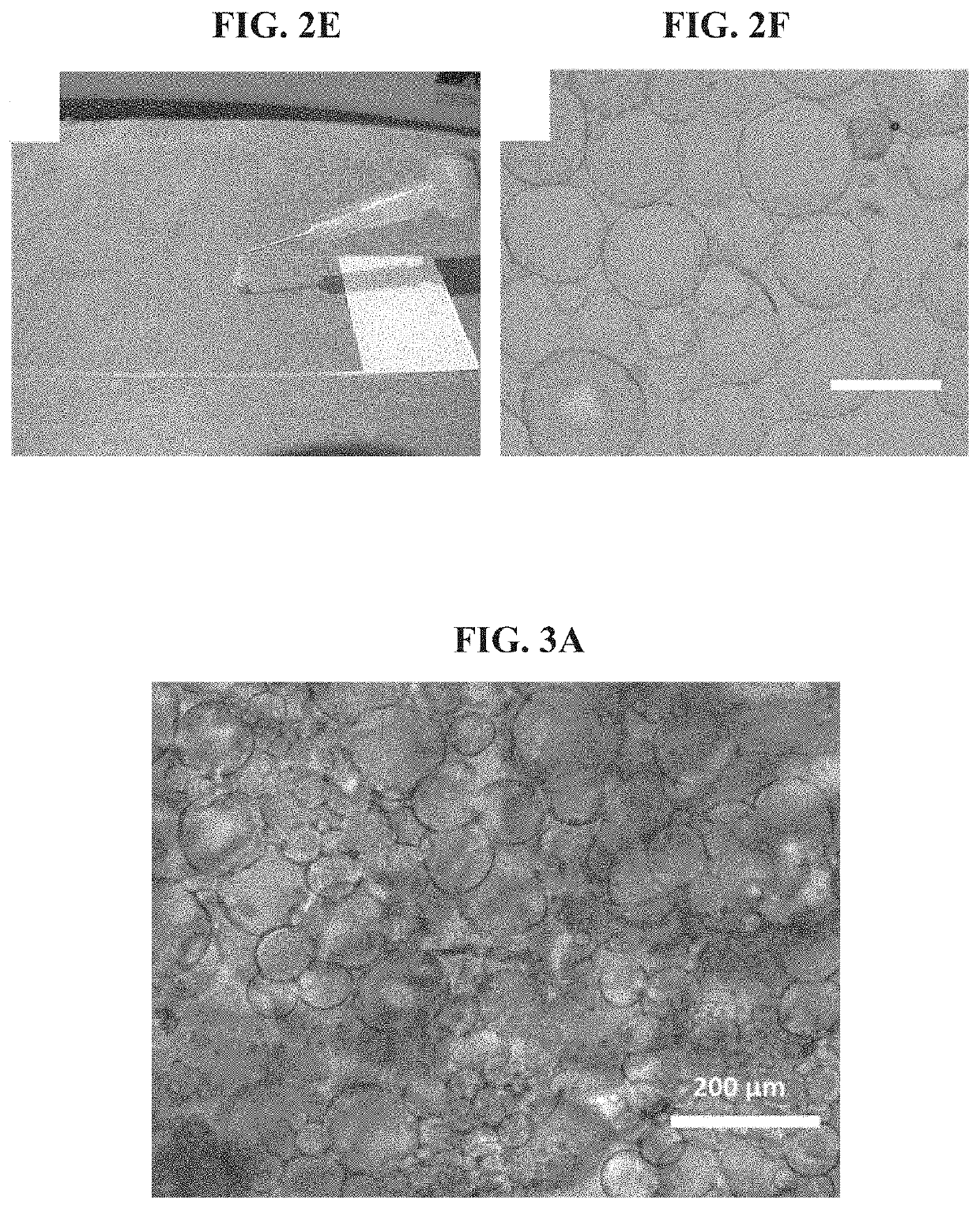Injectable porous hydrogels
a porous hydrogel and injection technology, applied in the direction of prosthesis, pharmaceutical delivery mechanism, medical preparations, etc., can solve the problem of limiting the clinical effect of the drug
- Summary
- Abstract
- Description
- Claims
- Application Information
AI Technical Summary
Benefits of technology
Problems solved by technology
Method used
Image
Examples
example 1
Microgel Synthesis and Cross-Linking
[0074]Gelatin microgel was prepared using the water-in-oil emulsion method described by Li et al. (2016) ACS Appl. Mater. Interfaces 8 (19), 11980-11989. Gelatin (type 1, from bovine and porcine bones) was dissolved in about 20 mL of deionized water at about 50° C. to about 55° C. to make an about 10% (w / v) solution. The gelatin solution was added dropwise to about 200 mL of olive oil at about 50° C. to about 55° C., and stirred for about 1 hour. The temperature of the mixture was lowered to reach room temperature (e.g., about 20° C. to about 25° C.) for about 30 minutes with stirring. Then, the mixture was placed in an ice-water bath for about 30 minutes with stirring to solidify the microgels by inducing physical cross-linking. Then, about 100 mL of pre-cooled acetone (at about 4° C.) was added into the mixture to precipitate the microgels with stirring for about 30 minutes in the ice-water bath. The microgels were separated from the olive oil a...
example 2
Characterization of Gelatin Microgels and Porous Hydrogel
[0076]The gelatin microgels were visualized with an optical microscope (EVOS XL, Life Technologies, Carlsbad, Calif.) and scanning electron microscope (SEM) (Tescan Lyra3 GMU FIB SEM, Bmo, Czech Republic). For SEM, the microgels were lyophilized and coated with gold / palladium to avoid charging. Size distribution of the gelatin microgels was obtained from the optical microscope and SEM images using ImageJ. After the porous hydrogel was formed, the detailed structure of the porous hydrogel was visualized with an optical microscope, SEM, and confocal microscope (Nikon AIR HD, Melville, N.Y.). For the SEM imaging, the porous hydrogel was dried by critical point drying. For the confocal microscopy, the porous hydrogel was formed from the gelatin microgels mixed with fluorescein isothiocyanate-labeled bovine serum albumin (FTIC-BSA) (0.1%).
[0077]The gelatin microgels were spherical in shape (as illustrated in FIG. 2A) and polydisper...
example 3
Rheological Characterization
[0079]The viscoelastic properties of porous hydrogel and nonporous hydrogels were characterized with a rheometer (TA Instruments AR 550, New Castle, Del.). Either a gelatin microgel solution or plain gelatin solution was mixed with mTG and placed under a plane stainless steel geometry (diameter=2 cm). The linear viscoelastic regime was first determined by a stress sweep. The gelation kinetics was observed by a time sweep, with an oscillatory stress of 1 Pa at 10 rad / s and 37° C. Once the gelation was completed, a frequency sweep was performed between 0.1 rad / s and 100 rad / s with an oscillatory stress of 1 Pa at 37° C. For a temperature sweep, the temperature was changed from 4° C. to 45° C. with an oscillatory stress of 1 Pa at 10 rad / s.
[0080]Time-sweep measurements show the kinetics of the covalent cross-linking by mTG. Both G′ and G″ of the porous hydrogel (generated from mixing gelatin microgel with mTG) at t=0 were higher than the nonporous hydrogel (...
PUM
| Property | Measurement | Unit |
|---|---|---|
| Temperature | aaaaa | aaaaa |
| Time | aaaaa | aaaaa |
| Antioxidant | aaaaa | aaaaa |
Abstract
Description
Claims
Application Information
 Login to View More
Login to View More - R&D
- Intellectual Property
- Life Sciences
- Materials
- Tech Scout
- Unparalleled Data Quality
- Higher Quality Content
- 60% Fewer Hallucinations
Browse by: Latest US Patents, China's latest patents, Technical Efficacy Thesaurus, Application Domain, Technology Topic, Popular Technical Reports.
© 2025 PatSnap. All rights reserved.Legal|Privacy policy|Modern Slavery Act Transparency Statement|Sitemap|About US| Contact US: help@patsnap.com



